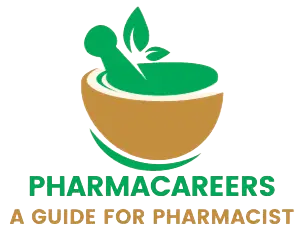-
Practice MCQ For Government Pharmacist Exams
Practice MCQ For Government Pharmacist Exams Pharmaceutics I unit V Semisolid dosage forms: Definitions, classification, mechanisms and factors influencing dermal penetration of drugs. Preparation of ointments, pastes, creams and gels. Excipients used in semi solid dosage forms. Evaluation of semi solid dosages forms Dawnload answers in PDF, Pharmaceutics I unit V Definition:Semisolid dosage forms are:…
-
Practice MCQ for Government Exams
Practice MCQ for Government Exams Here are some practice MCQ for government exams on the Pharmaceitics I unit II. Pharmaceutical calculations: Weights and measures – Imperial & Metric system, Calculations involving percentage solutions, alligation, proof spirit and isotonic solutions based on freezing point and molecular weight. Powders: Definition, classification, advantages and disadvantages, Simple compound powders…
-
MCQs on Unit I of Pharmaceutics I
MCQs on Unit I of Pharmaceutics I Pharmaceutics I Unit I For more details read our articles. Historical background and development of profession of pharmacy: Histor of profession of Pharmacy in India in relation to pharmacy education, industry and organization, Pharmacy as a career Pharmacopoeias: Introduction to IP, BP, USP and Extra Pharmacopoeia. Dosage forms:…
-
Prescription
Introduction Prescription is written order from registered medical practioner, or other properly licenced practitioners to a pharmacist to compound and dispense a specific medication for the patient. Prescription writing stands as a cornerstone in the practice of medicine, serving as the crucial link between healthcare providers and patients access to appropriate mediations. In this article…
-
Semisolid dosage forms
Semisolid dosage forms Semisolid dosage forms are medications that are neither solid nor liquid, but somewhere in between. They are typically applied to the skin, nasal mucosa, cornea, rectal or vaginal tissue, buccal tissue, ear, or urethral membrane. Examples include ointments, pastes, creams, emulsions, gels, and rigid foams. They contain one or more active ingredients…
-
Pharmaceutical incompatibilities
Pharmaceutical incompatibilities Pharmaceutical incompatibilities refer to situations where two or more substances are mixed or come into contact, resulting in a negative effect on the quality, stability, efficacy, or safety of one or more of the substances. Incompatibilities can occur between different drugs, drug components, excipients, or drug delivery systems. It’s important to identify and…
-
Suppositories
Suppositories A suppository is a solid medical preparation in a roughly conical or cylindrical shape, designed to be inserted into the rectum or vagina to dissolve. It’s a dosage form used to deliver medications by insertion into a body orifice, where it dissolves or melts to exert local or systemic effects. It’s a solid but…
-
Emulsion
Emulsion Emulsion is a biphasic liquid disperse system where the dispersed phase is composed of small globules of a liquid distributed throughout in an immiscible vehicle. In emulsion terminology, the dispersed phase is referred to as the discontinuous or internal phase, and the dispersion medium is the continuous or external phase. The diameter of the…
-
Suspensions
Biphasic liquid dosage forms Biphasic liquid dosage forms such as suspensions and emulsions, are pharmaceutical preparations that consist of two distinct, immiscible phases. These two phases can be different according to their composition, density, and solubility. biphasic liquids are of two types, such as suspensions and emulsions, consisting two immiscible phases. In this article we…
-
Monophasic Liquids
Monophasic liquids Monophasic liquids in pharmacy are pharmaceutical formulations that consist of a single, homogenous phase. They are typically comprised of a solvent, one or more dissolved active pharmaceutical ingredients (APIs), and various excipients. These liquids represent a true solution, which is a clear, homogeneous mixture prepared by dissolving a solid, liquid, or gas in…
Search
Recent Posts
- Bevacizumab Explained: Structure, Mechanism of Action, Clinical Uses, and Side Effects
- Fluconazole: Mechanism, Clinical Uses, Dosage, Side Effects, and Precautions
- Cheaper Cancer Treatment: How GST Cut on Lifesaving Medicines Brings Hope
- Montelukast: Structure, Pharmacology, Mechanism, Uses, Side Effects, and Clinical Guide
- Biopsy: A Cornerstone in Modern Medical Diagnosis
Categories
- Biochemistry
- Biostatistics
- Biotechnology
- Blog
- Chemistry
- Community Pharmacy
- Hospital Pharmacy
- Human Anatomy And Physiology
- Inorganic Chemistry
- Medicinal Chemistry
- Microbiology
- Miscellaneous
- Novel Drug delivery Systems
- Organic Chemistry
- Pathophysiology
- Pharma Updates
- Pharmaceutical Analysis
- Pharmaceutical Jurisprudence
- Pharmaceutics
- Pharmacognosy
- Pharmacology
- Pharmacy
- practice mcq
- Previous Question Papers
- Social Pharmacy
- Study Material
Archive
Tags
biochemistry bpharmacy third semester Construction free practice mcq inorganic chemistry microbiology microbiology mcq pathophysiology Pharmaceutical Engineering pharmaceutics Pharmacology pharmacy practice mcq physical pharmaceutics physical pharmaceutics 2 practice MCQ for govt pharmacist exam



